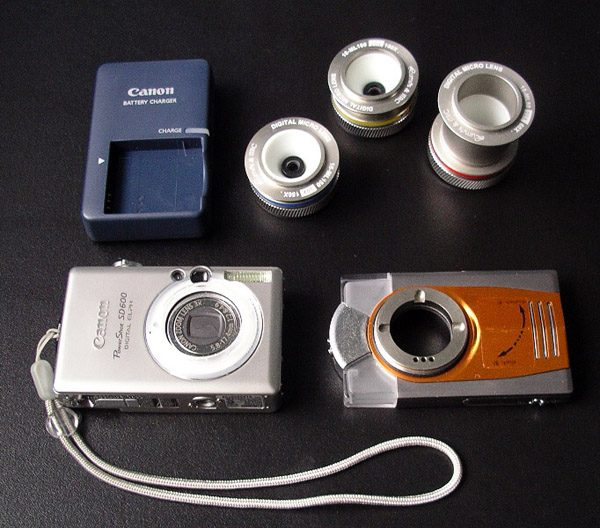
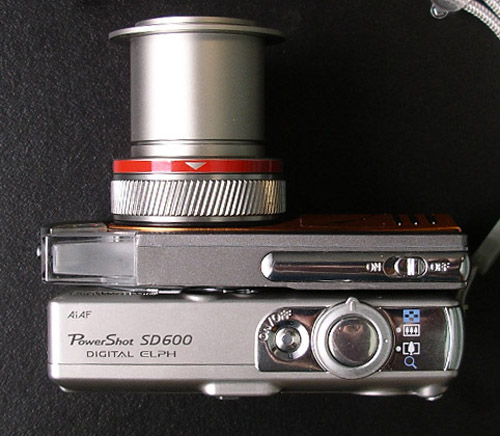
|
Eyes on the X-Loupe Mark Spear, USA |
When is a cool but expensive gadget justified? How much functionality and convenience is worth $1,200? I donít know of any other pocket sized device that delivers the same combination of resolution and productivity found in the X-Loupe. But it is not perfect, nor is it a perfect fit for all users. Still, I like mine quite a bit despite the high cost and relatively narrow use.
What you get.
The ingenious part of the X-Loupe design is that it builds off of a standard small digital camera, the Cannon Powershot SD600 Digital Elph. This is a competent if ageing camera in its own right and perfectly adequate for the establishing shot usually required to put a macro-photo in context.
The X-Loupeís Digital Elph is modified with the addition of a plastic ring around the lens (see Figure 1). The ring receives and locks down an intermediate piece. The intermediate piece receives and provides battery power for three macro lenses. The lenses each have an internal ďring illuminatorĒ and a spacer set near the proper focal length.
The ďPro-KitĒ includes all three lenses and comes in a plastic clamshell case thatís too bulky to travel with. A manual is included but itís not very useful. Each lens has its own plastic box for protection. A miniature copy stand is available as an optional extra. I eschewed this as running counter to the X-Loupeís essential virtue, portability, perhaps a mistake.
How you use it.
In use, the lens and intermediate piece attach easily to the camera (see Figure 1). The adapter battery is identical to the camera battery so either can be charged using the supplied charger. The camera must be set for non-macro, no flash, and zoomed fully forward. Next, the whole assembly placed against the object to be photographed. The cameraís LCD is used to frame and check focus. Autofocus is generally acceptable. Depth of field is small but usually adequate for my use.
What you can and canít do.
The marketing that accompanies the X-Loupe suggests that the equipment can be used for Quality Control of precision manufacturing, much like a trinoc dissecting scope. Fair enough, but I hesitate to fly with a full sized scope and I canít fit one in my pocket.
I use the X-Loupe to take quick photos of small mycological or botanical objects while being distracted by well-meaning farmers. I donít have time to set up carefully controlled shots nor can I be too particular about the finest details. Yet when I return to the lab I need an accurate record of the field appearance of the problem.
Most small objects in nature, the farm, or the factory are fair game for the X-Loupe and can be imaged on the spot with no ancillary equipment. This is very valuable for the casual macrophotographer.
However, donít bother trying to image single celled animals or fungal conidiophores. Also, very shiny objects or samples behind glass or plastic will show glare from the illuminator. This makes photography of prepared slides or samples in plastic difficult or impossible. Finally, holding the camera still enough and at just the right distance can be a challenge.
Conclusion
I bought my X-Loupe over a year ago from an apparently discontinued source. The current representative for the product can be found at http://www.ecwilliams.co.uk/x-loupe/. I am unsure of the current pricing because the website requires an overly intrusive log-in procedure. It looks spam-tastic. Thatís too bad because there is new software available that facilitates adding dimensions, annotations, and extended focus to X-loupe images.
If you think of the X-Loupe more as a super-macro lens than a traditional microscope you wonít be disappointed. Itís a shame that you have to buy yet another small camera in the kit. I expect most Micscape readers have at least one small digital camera already on hand.
To get the best possible images one should employ a well equipped lab and a serene afternoon. If there is a shortage of serene afternoons the X-Loupe can be an asset. It has earned a place in my travel bag but not in my lab.


Figure 1. The X-Loupe
kit. Left to right: Battery charger, 30x lens, 20x lens,
10x lens. Bottom left to right: Canon Digital Elph, lens adapter.
Right: The assembled X-Loupe with 10x lens.

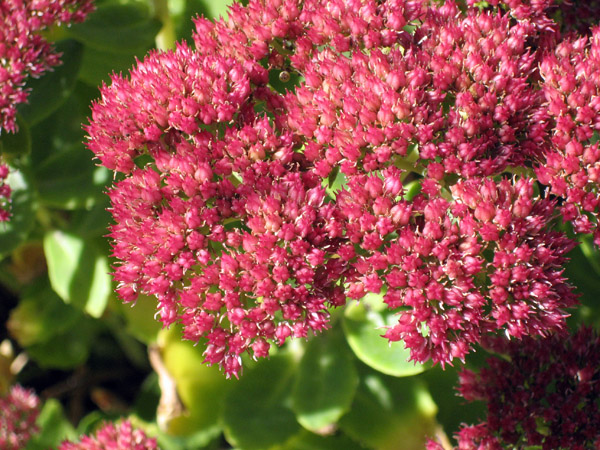
Figure 2. Left: Sedum sp. var Autumn Joy. Top Right: Same subject, Elph macro setting.
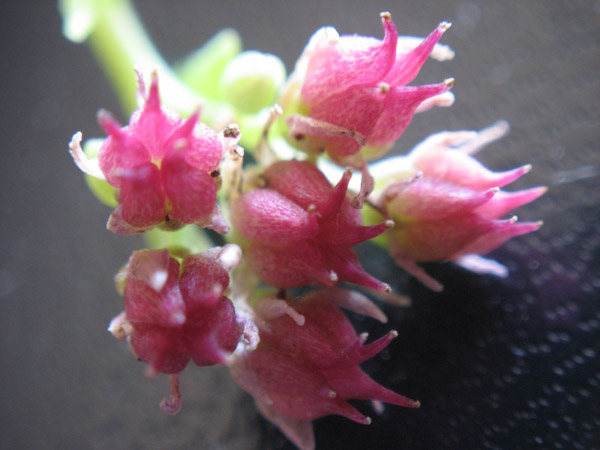
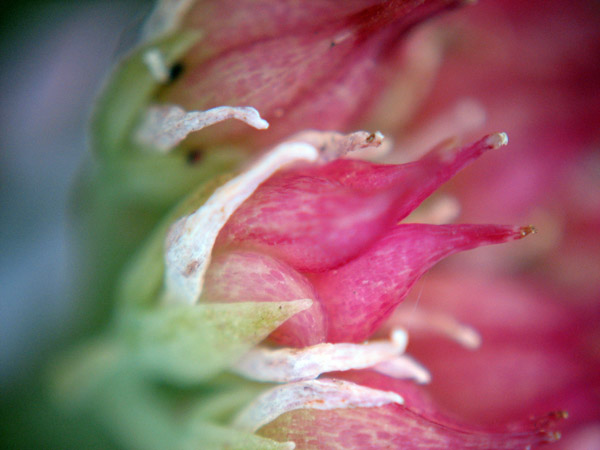
X-Loupe 10x, 20x.
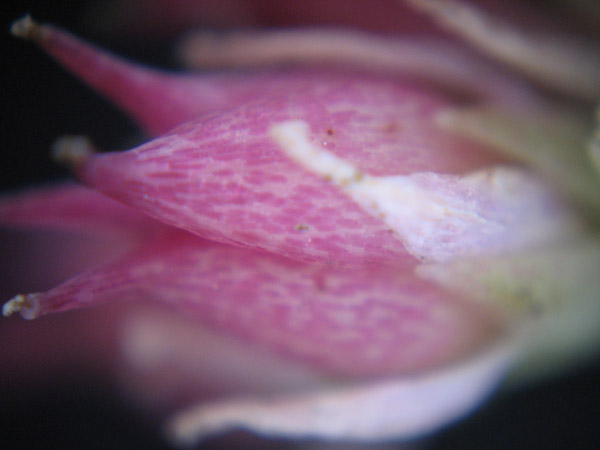
X-Loupe 30x.
Note: All five photos were taken in less than five minutes while chatting.
The author welcomes comments or suggestions.
Please report any Web problems or offer general comments to the Micscape Editor.
Micscape is the on-line monthly magazine of the Microscopy UK web site at Microscopy-UK.